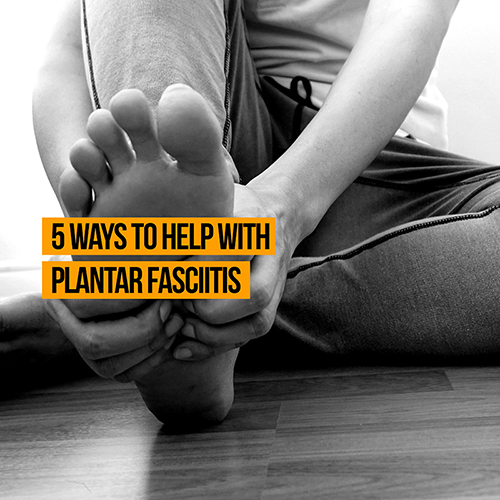Today at PhysioRoom we’re going to be taking a look at Plantar Fasciitis and how you can help alleviate some of the problems this pesky condition brings with it using products like supports and insoles.
First of all, let’s have a quick recap of what Plantar Fasciitis actually is shall we…
What is Plantar Fasciitis?
A common foot condition, Plantar Fasciitis causes pain in the heel and sole of the foot.
On the underside of your foot, there’s a fibrous sheath that runs along most of the length of the sole of the foot. This is called the Plantar Fascia, and when this Fascia becomes inflamed, it’s called Plantar Fasciitis.
The Plantar Fascia is attached between the heel bone and the bones at the base of the toes, covering small muscles in the sole of the foot.
One of the primary stabilising structures of the arch on the inner side of the foot, the Plantar Fascia act as a lever to push off of with force while walking and running. As you ‘toe-off’ it becomes taut, helping you gain the required leverage.

More often than not the inflammation of the Plantar Fascia occurs at the point where it attached the heel bone.
The condition is reasonably common in older people, where the movement in the joints of the foot have become restricted, therefore increasing the strain on the Plantar Fascia.
It may occur in people who do a lot of standing, walking or sporting activities as well, usually as a result of overuse.
Fasciitis also tends to be more common in females and in people who are generally overweight.
Plantar Fasciitis Symptoms
Plantar Fasciitis produces foot pain over the inside of the heel and usually this will radiate down the inside of the sole of the foot. Activity can be a cause or trigger of this pain and it is also typically present in the morning when taking the first steps of the day.
Diagnosis of Plantar Fasciitis can be performed by a doctor or physiotherapist if pain is present upon touching the affected area and/or stretching the Plantar Fascia (by pulling the toes up).
Diagnoses of Plantar Fasciitis can be confirmed on an ultrasound scan, when the fascia has a thickened appearance. In a small number of cases, heel pain that fails to respond to normal treatment may require the use of an x-ray to rule out other conditions such as a bony spur on the heel bone or a heel bone fracture.
Plantar Fasciitis Treatment
Plantar Fasciitis Support
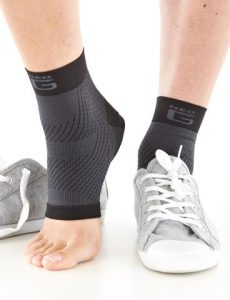
Plantar Fasciitis is inflammatory in nature and the key to successful treatment is to determine what is causing the inflammation and address this problem. In most sporting individuals the cause is overuse and the most important advice is to allow adequate rest, to take the strain off the Plantar Fascia and allow the affected tissues time to heal.
The Neo G Plantar Fasciitis Everyday Support features Multi Zone Compression to help relieve swelling and discomfort. Advanced Silicone Heel Cushioning helps provide impact protection as well as support and added comfort in every step.
The integrated anatomic silicone insert provides pressure release and advanced cushioning enabling best support and relief. Helps protect and support heel and foot during everyday, recreational and sporting activities. Can be worn all day, with or without footwear helping you stay active.
Insoles for Plantar Fasciitis
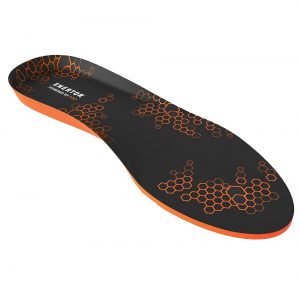
In some cases of Plantar Fasciitis there may be a problem with the biomechanics of the foot, contributing to the problem. The usual findings are a foot that ‘over pronates’, where the inner arch of the foot rolls over too much during walking and running. This can lead to tightness in the Achilles tendon and recent research has suggested that a tight Achilles tendon can increase strain on the Plantar Fascia. An insole that supports the inner arch of the foot can help to remedy this.
Such as the Enertor insoles, which, while testing their products, found that:
- 91% reported an improvement in their overall level of pain
- Levels of overall pain reduced by 35% on average after wearing insoles for 4 weeks
- 83% would recommend the insoles to a friend
- After 4 weeks, 83% of chronic sufferers saw an improvement in pain after exercise
- 87% reported an improvement in how frequently they experienced pain
- 75% of new sufferers agree the insoles have helped heal their Plantar Fasciitis
You can also check out our full range of shoe Insoles by Clicking Here!
Or if you’re looking for something specific, try some of our specialist Insoles:
- Custom Sports Insoles
- Shock Absorbing Insoles
- Full Length Insoles
- 3/4 Length Insoles
- Sports Insoles
- Gel Insoles
Plantar Fasciitis Night Sock
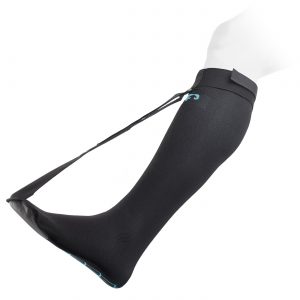
Stretching the Plantar Fascia (by pulling the toes towards the shin) is effective in encouraging the tissue to regain its normal alignment. This helps the healing process and can relieve the symptoms of Plantar Fasciitis. Prolonged stretching of the Plantar Fascia can be achieved using an Ultimate Performance Plantar Fasciitis Sock which is worn during sleep. Research indicates that night splinting can significantly reduce Plantar Fasciitis symptoms in over 80% of cases – particularly pain on the first few steps after waking up each morning.
It’s a strange-looking contraption, but the night sock is a rather ingenious device which works while you sleep. The adjustable strap means you can actually pull your toes upwards towards your knees. This stretches the plantar fascia, which encourages the tissue to heal and repair, particularly when applied for long periods during the night. It’s difficult to get a good night’s sleep if your Plantar Fasciitis pain is particularly troublesome and the night sock is a great way to offer support.
Foot Massage
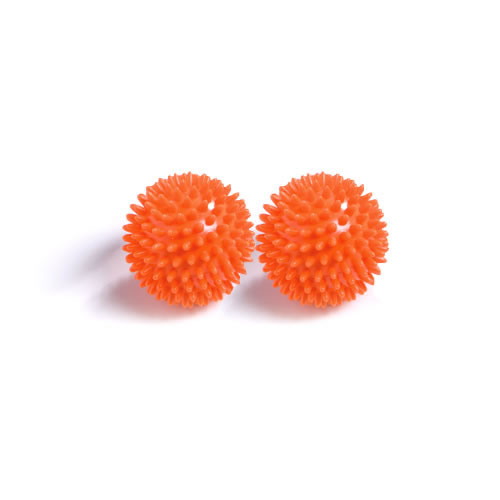
Sometimes, a good old-fashioned foot massage can work wonders. If you donִ have access to someone who could do this for you, such as a reflexology therapist or even a willing partner/friend, don’t fret, there are plenty of physical massage items which can help.
The Spiky Massage Balls are the perfect example. Available as individual hand/feet balls or of a set that incorporates massage for the whole body, the PhysioRoom spiky Massage Balls can be used for self massage or with assistance to treat pain, improve circulation, stimulate muscles and ease tension.
Kinesiology Tape
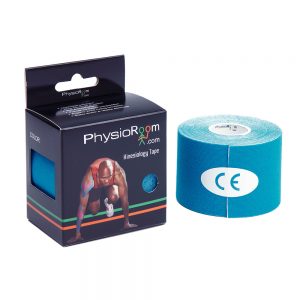
Taping has been shown to be an effective treatment for Plantar Fasciitis. The tape supports the Plantar Fascia and removes some of the strain that can aggravate the condition.
You may have seen professional athletes covering themselves with colourful tape and wondered what it’s all about, or you might be a bit more clued-up on the benefits of k-tape for use during the recovery process after a sprain or muscle problem. Nevertheless, plantar fasciitis isn’t a condition you usually associate with kinesiology tape, but it can actually relieve the pain in an alternative way to some of the previously-mentioned products. While a heel support may focus on compression, kinesiology tape actually removes the pressure from the area it is applied to; it acts as a second skin by pulling the upper layers of your own skin and providing a lifting effect.
Try out our range of Kinesiology Tapes here, stronger and stretchier to give you long-lasting support.
Plantar Fasciitis Continued
With the help of aids like the above, Plantar Fasciitis usually settles down in 95% of cases. However, in severe cases where heel pain is affecting normal walking then an injection with a mixture of corticosteroid and local anaesthetic can be helpful. Following this injection, the patient is required to rest for a few days, then normal activities can be resumed gradually.
In persistent cases of Plantar Fasciitis, that fail to respond to 6 months of conservative treatment, then surgery can be considered. In the past, surgical techniques have included removal of bony spurs from the heel bone and release of the Plantar Fascia from the heel bone itself, but the results were inconsistent. These invasive surgeries often caused later problems such as nerve damage and changes to the mechanics of the foot.
A modern treatment approach for Plantar Fasciitis is an ultrasound guided needle fasciotomy. This is a minimally invasive procedure where a needle is inserted into the Plantar Fascia and moved back and forwards to disrupt the fibrous tissue that proliferates as a result of the chronic inflammation. Because a needle is used instead of a scalpel, and because the whole procedure is observed using an ultrasound scanner, then there is far less danger of surgical complications. By disrupting the tight fibrous tissue the strain on the Plantar Fascia is relieved and healing can take place.


